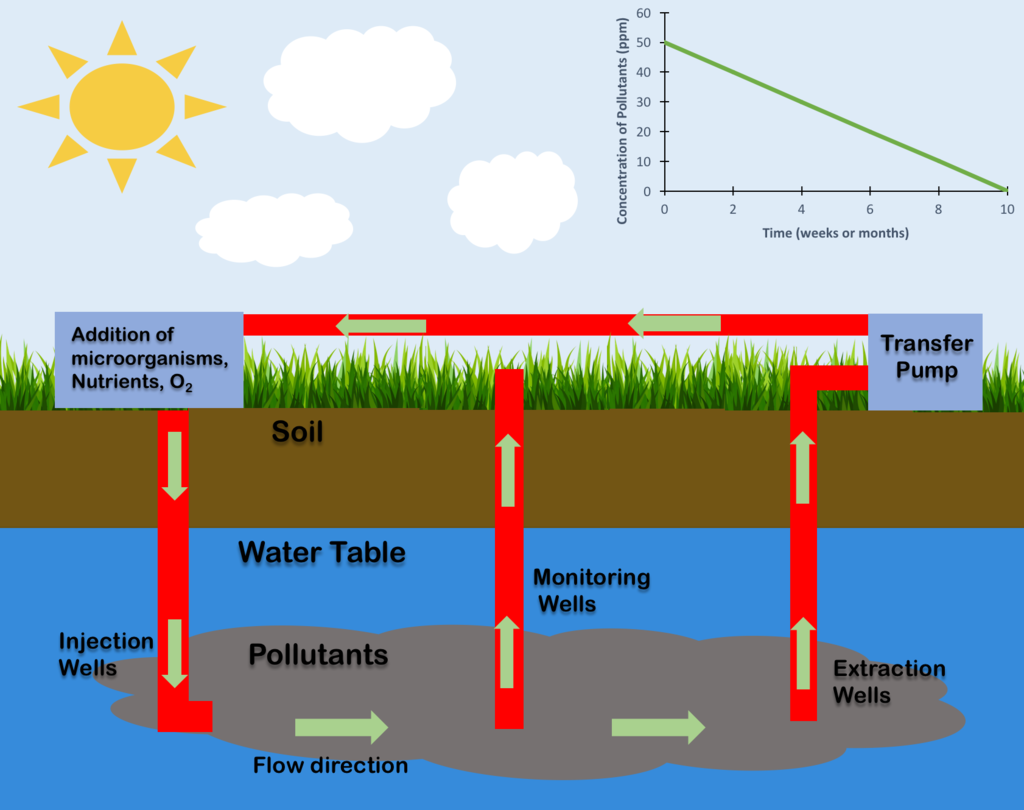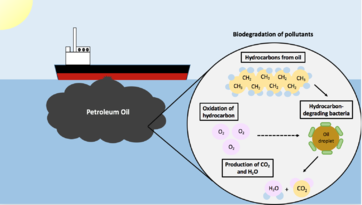4.3: Bioremediation to Clean Our Oceans
- Last updated
-
-
Save as PDF
Bioremediation is a possible solution for the growing problem of pollution and global warming. Bioremediation involves using living microbes to clean waste. These microbes can naturally occur in the area or scientists can extract them and place them into areas that need them. When scientists place cultured microbes into an area for purposes of bioremediation it is called bioaugmentation.

“In Situ Bioremediation” by Jørgensen, K. S. via in situ bioremediation under [CC BY-SA 4.0]
The Process of Bioremediation
Microbes in the environment break down organic material. Some microorganisms can degrade contaminants by
breaking down these materials into harmless substances. Bioremediation is about creating an ideal environment for microbes that degrade pollution by providing these organisms with fertilizer, oxygen, and other conditions that encourage their rapid growth. Microbes often break down pollutants into small amounts of water and harmless chemicals like carbon dioxide.
“Mechanisms involved in bioremediation of toxic compounds” by Timmer26, via bioremediation of oil spills [CC BY-SA 4.0]
In order for bioremediation to work successfully, conditions need to be
ideal for cell growth. Adequate temperature and food must be present in the area. If conditions are not already ideal, amendments can be used. Amendments can consist of common materials like molasses or vegetable oil that increase the chance of survival for microbes by making conditions more suitable for their growth and enhancing their ability to break down contaminants. The process of bioremediation can be as short as a few months or as long as a few years. If the contamination concentration is high, or the contaminated area is very large, then clean up will take longer. Many people worry about the safety of using microbes. However, microbes are completely safe because they are already naturally occurring in the environment and are not harmful to humans. A
fter the contaminants they needed for growth are depleted, the microbes from bioaugmentation will no longer have ideal living conditions and will not survive long. One downside of bioremediation includes creating noise pollution from the use of mixers and pumps that could be irritating to businesses and households.
Advantages of Bioremediation
Bioremediation is relatively cheap compared to other pollution cleanup methods. It is safe and can lead to cleaner water and soil in the area. Another advantage is that contaminated soil and groundwater are treated onsite without having to dig and transport materials elsewhere for treatment. One common example of a successful bioremediation process is composting. This video explains how bioremediation has been used to help clean up oil spills.
Information in this chapter is thanks to content contributions from Bryce Chouinard .




